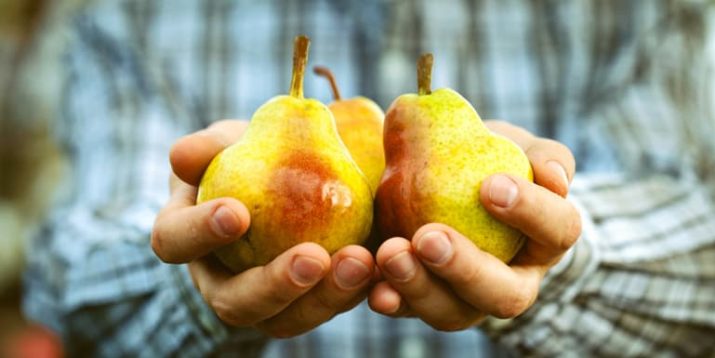8 Reasons to Eat Healthy That Don’t Include Weight Loss

The next time you’re somewhere that sells magazines — at an airport, drugstore, or museum, perhaps — scope out the cover lines from any fitness mag and you’re bound see phrases such as: “Eat for Abs!” or “The Six-Pack Diet!” or “The Eat-What-You-Want Abs Meal Plan!”
Overuse of the exclamation point aside, the push to eat healthy to look better trumps the idea that we should eat healthy to live longer, or at least, live healthier. But it’s why cliches like “abs are made in the kitchen” and “eat garbage, look like garbage” are the first things many of us think of when we hear “healthy eating.”
So we’d like to remind you of a handful reasons to eat healthy that don’t include dropping a waist size or helping you carve washboard abs.
Why Eating Healthy Can Affect so Much More Than Your Weight
1. Improved Memory: Mediterranean diets — meal plans that are rich in leafy greens, fruits, veggies, seeds, beans, and monounsaturated fats — not only taste a billion times better than TV dinners, but they may also help boost attention span and stave off cognitive decline, according to research in the journal Frontiers in Nutrition. For the aging population, adding olive oil or nuts to meals may support cognitive function, according to one recent research study.
2. Fewer Cravings: Gulping down spinach won’t have the same immediate effect as it had on Popeye’s bulging biceps, but the greens can provide you with a nice dose of vitamins A, C, and K. A spinach extract standardized to thylakoids (a membrane found in spinach) was shown to help suppress appetite and longing for food. Researchers gave 60 overweight subjects either a five-gram dose of spinach extract or a placebo a week apart. Those who consumed the spinach extract were less hungry compared to subjects who gnawed on a placebo.
3. Improved Sexual Health: On average, Americans eat 16 grams of fiber per day, which would be a great achievement if it didn’t fall short of the recommended 21–38 grams per day. Along with aiding digestion and helping you stay regular (you know what we mean), there are other reasons to fill up on high-fiber fruits: some data suggests that guys who regularly snack on nature’s candy are 14 percent less likely to develop erectile dysfunction (E.D.).
What’s a great, widely available higher-fiber fruit to try? We’ll make a case for pears: A University of Minnesota, St. Paul study found that pears can provide nearly 25 percent of your daily fiber intake, which is more fiber than that found in apples and bananas (they offer 17 percent and 12 percent, respectively).
If you don’t like pears, or don’t have any fiber-filled fruit handy, Shakeology is another great source of fiber — it supplies about 24 percent of your daily fiber needs — and it’s sweet like fruit. You can tote it with you wherever you go, and shake it up with water (or use it in smoothies) for a quick hit of fiber, protein, and a ton of vitamins and minerals.
4. A Brawnier Think Muscle: The World Health Organization advocates limiting sugar to a max of 10 percent of your daily calories. Failing to scale back sugar intake has even been linked to an increased risk for heart disease-related deaths. Not so sweet, right?
There’s more: Consuming too much sugar might also screw with your brain chemistry. UCLA researchers fed rats about a liter’s worth of fructose water each day for six weeks, during which time the sugar overload altered genes in the hippocampus (emotion, learning, and memory) and hypothalamus (hunger, thirst, and body temp.). The leap between drowned rodents in sugar water and humans drinking soda pop is a big one, but the alterations could potentially open the door for a number of negative health consequences.
5. Better Endurance & Recovery: Watermelons are known to provide L-citrulline, an amino acid cyclists took (via a supplement) for seven days at 2.4 g/day and once again before an exercise test in a study published earlier this year in the Journal of the International Society of Sports Nutrition. The L-citrulline supplementation reduced the time it took for cyclists to complete a cycle ergometer exercise trial.
According to another small 2013 study, watermelons could help reduce muscle soreness. Researchers distributed 500 milliliters (total) of watermelon juice to seven athletes an hour before they exercised. The lifters who chugged the melon juice reported experiencing less soreness in the following 24 hours.
6. A Better Mortality Rate: Granted, nobody can predict when a piano might fall on someone’s head or if the Death Star will strike a planet, but the New England Journal of Medicine studied the nut consumption of 119,000 people. In this observational study there was an inverse association of nut consumption with mortality. However, this type of epidemiological observational study only highlights associations and not causality.
7. A Happier and More Creative Existence: The British Journal of Health Psychology had 405 volunteers snack on fruit, vegetables, sweets, and chips for nearly two weeks, and log their meals online. The outcome: People who stuffed their maws with more fruits and veggies reported a better overall well-being.
8. More Energy And Quality Zzzzzzzs: Want to feel happier, be more energetic, and improve sleep quality? Slashing calorie intake might do the trick. Researchers studying long-term calorie reduction found that subjects who cut back 25 percent over a two-year period improved in all three aforementioned areas. Unsurprisingly, the calorie reduction also translated to weight loss — an average of about 17 pounds.
OK, so this last point did talk about weight loss. But, that’s a happy side effect that can result from eating clean. Granted, many people use weight loss as their initial motivation to improve their diets, but if they stick it out long enough, they can reap all of these other benefits that go beyond the superficial.
